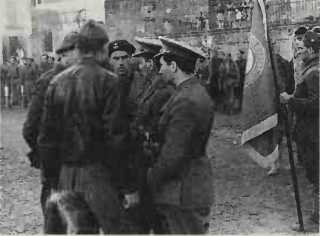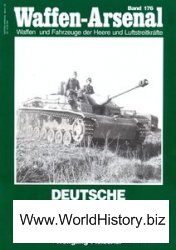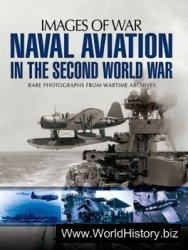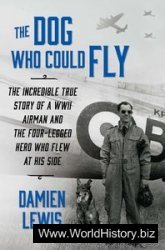Mosquitoes. Fighting continued for three weeks and British casualties numbered about 1,000. The Indonesians lost many more. The government of India informed Mountbatten that no more Indian troops would be sent to Java. Public opinion was highly critical, and out of 30 battalions all but four were Indian.
Mountbatten wanted to recognize the Nationalists as a legitimate force, as he had done in Burma, but Bevin as Foreign Secretary called for punitive action against these “terrorists”. The British now had to reckon with an Indonesian army, Tentara Kea-mann Raykat, and despite their doubts about the Dutch military forces, implacably opposed to the Nationalists and all too ready to shoot, a force equivalent to two divisions arrived. They doubled the area of occupation: control was slipping from British hands. The Dutch and Indonesians laboriously reached agreement: the authority of the Republic was recognized in Java and Sumatra; elsewhere Dutch-sponsored administrations would join in a federal union. This agreement enabled the British to leave: the last units departed before November 30 1946.
After further desultory negotiations, the Dutch launched what they called a “police action” in Java, thrusting deep into Republican territory. The un intervened and the parties agreed to accept the “Van Mook Line” in Java which yielded further gains to the Dutch. There was a large communist component within the Indonesian army and the 4th (Senapati) Division raised the Red Flag. Inter-unit fighting followed, but the crack Siliwangsi Division suppressed the revolt. The Dutch seized the opportunity to kidnap Sukarno, intending to liquidate the Republic.
International opinion, especially in Asia and Australia, was outraged. The US suspended part of their aid to the Netherlands. Negotiations were resumed and the Dutch agreed that sovereignty would be transferred to a United States of Indonesia before December 30 1949. This was not quite the end of the fighting as a Dutch officer, “Turk” Westerling, raised a mercenary force which swiftly captured Bandung (January 22 1950).
Disavowed by his government, he hastily departed.
The Dutch did not include New Guinea within the territory transferred and this remained in dispute, subject to ineffective Indonesian invasion attempts until, in 1962, the Dutch abandoned the attempt to form a separate semicolonial state. After brief un control, Indonesia moved in. Sukarno’s doctrine of “continuous revolution” then led to “confrontation” with newly constituted Malaysia and jungle fighting in Borneo. This ended only when Sukarno was ousted by the army, 1965-67. HT.
INF Treaty see INTERMEDIATE NUCLEAR FORCES TREATY.
Infrared. That portion of the electromagnetic spectrum between l,000Ghz and visible light. Hot objects emit infrared radiation which can be detected at low frequencies by thermal sights that can thus “see” in darkness. Guided weapons can also home on higher-frequency infrared emissions while optical sights can also see into higher infrared frequencies. Lasers used for range-finding and guidance purposes also operate in the infrared band.
Ingenohl, Adm Friedrich von
(1857-1933). Ger. A protege of Tirpitz, Ingenohl became c-in-c. High Seas Fleet, in 1913. Overcautious, he failed to exploit his near-parity in battleships with Jellicoe in 1914: the numerical difference became increasingly unfavourable to Germany as the war progressed. Following von Spee’s defeat at the Falklands, Ingenohl finally took the initiative. He sent battlecruisers to bombard the British east coat, hoping to lure out British squadrons to be destroyed by his supporting main fleet. But poor visibility, bad luck - and Ingenohl’s caution - resulted in the withdrawal of the High Seas Fleet with the bombardments accomplished but the trap unsprung. His failure to support Hip-per at the Dogger Bank led to his replacement by the equally cautious von Pohl. CJWICD.
Ingersoll, Adm Royal Eason (1883-1976). US. Commanded US Atlantic Fleet from 1942, with responsibilities that included anti-
U-boat campaign until formation of specialized Tenth Fleet, May
1943. Participated in Operation “Torch”, November 1942; commanded Western Sea Frontier from November 1944.
Intercontinental Ballistic Missile (ICBM). A land-based ballistic missile with a range of over 3,300 miles (5,500km). icbms may be launched from fixed sites, usually protected silos, or from road or rail mobile launchers.
Intermediate Nuclear Forces (INF). Nuclear forces with a range of 300 to 3,300 miles (5005,500km), subdivided into short-range INF (srinf), 300-600 miles (500-l,000km) and long-range inf (lrinf), 600-3,300 miles (1,0005,500km). Land-based lrinf include the Soviet SS-20 irbm and SSC-X-4 cruise missile, and the American Tomahawk ground-launched cruise missile and Pershing 2 IRBM. srinf include the Soviet SS-12 and 23 missiles and the American Pershing 1 missile operated by the West German Air Force. All these systems are being destroyed under the inf Treaty and associated understandings. Both sides will retain nuclear-capable aircraft of intermediate range. Intermediate nuclear forces are seen as especially appropriate for nuclear first use.
Intermediate Nuclear Forces Treaty. The Treaty signed by the USA and USSR in Washington in December 1987 and ratified in Moscow at the end of May 1988; it came into force on June 1 1988. The treaty covers the destruction over three years of all land-based intermediate range cruise and ballistic missiles, both long-range and “shorter range”, the latter within 18 months. Protocols to the treaty lay down detailed elimination procedures for the missiles and on-site inspection arrangements to monitor the process. The treaty is a bilateral US-Soviet accord, but the European nations with inf missile bases have formally acceded to inspectors having rights of access to their territory. Negotiations on INF began at Geneva in November 1981, but were broken off two years later when the first missiles arrived in Western Europe. They began again as part of the “Defense and Space Talks” in 1985. The INF Treaty is of great significance as the first arms control treaty to ban a particular category of nuclear weapon, the first to make major reductions of forces, as a precedent for on-site inspection arrangements and as a major step in improved East-West relations. EJG.
Intermediate Range Ballistic Missile (IRBM). A land-based ballistic missile with a range of around 1,500-3,300 miles (2,5005,500km). In the late 1950s Thor and Jupiter irbms were rapidly developed in the USA and these were briefly forward-deployed in Turkey, Italy and the UK in the early 1960s. The Soviet Union maintained a large irbm force into the 1980s until the inf Treaty.

Britons in an International Brigade
International Brigades, Spanish Civil War. In the autumn of 1936 during the Nationalist advance on Madrid, the Comintern, through the Communist Parties of Europe, called for volunteers for Spain. In theory non-partisan, the Brigades were entirely under Party control. Although some 35,000 foreigners served in the Brigades, the maximum was 18,000 at any one time, and by 1938, their ranks largely consisted of Spanish soldiers. The French contingent of over 9,000 was the largest although they became quickly disillusioned and left. Poles and German speakers represented some 5,000 each, Italians 3,000, the US provided slightly less and Britain about
2,000. In all there were volunteers from 53 countries. The first and reputedly best was XI International Brigade which fought in the defence of Madrid. Although their role has been exaggerated both by Communists and Nationalists, the Brigades greatly boosted Republican morale. After Brunete, resentment at the waste of lives sometimes flared into mutiny. Many returned to their countries horrified by Stalinist witch-hunts for “Trotskyist-Fascist spies”. The Comintern organizer of the Brigades, Andre Marty, admitted to executing about 500 Brigaders, nearly one-tenth of their casualties in the war. After their sacrifice on the Ebro, the International Brigades were withdrawn by the Republican government in a vain gesture to the Non-Intervention Committee. AB.
Intrepid. US aircraft carrier. Essex class; completed 1943. Marshalls; Truk raid (1944); Palau; Leyte Gulf; damaged by kamikaze at Okinawa but back in service by end of war. Subsequently full Hancock-type modernization with steam catapults, angled deck etc. In 1962 an anti-submarine carrier. Established as museum ship in New York Harbor (1982).
Invincible. British anti-submarine warfare carrier of 19,800 tons. In 1982, her sale to Australia had recently been announced as part of the defence cuts which included the proposal to scrap hms Endurance. Her embarked Sea Harriers, with those from hms Hermes, were an essential part of the British Task Force’s air defence and close air support for troops ashore during the Falklands War.
Iowa. US battleship. Name ship of class; largest and fastest American battleships and the only surviving battleships; 57,540 tons full load, 32 knots; 9 X 16in guns. Completed in 1943, Iowa took Roosevelt to the Teheran conference, then joined Pacific Fleet. Screened landings at Marshalls, Marianas, Palaus, Philippines, Iwo Jima and Okinawa. In reserve for many years but recommissioned recently with guns supplemented by missiles.
Iran-Iraq War see gulf war.
Iraq, Rashid Ali rebellion (April 3—May 31 1941). Rashid Ali seized power in Baghdad on April 3. By late April the Iraqi Army was besieging the raf training air base at Habbaniya, where Air ViceMarshal Smart used training aircraft as improvised bombers. He was reinforced with 300 troops flown in from Basra under Col Ouvry Roberts, who organized the ground defences. On May 18, “Habforce”, an improvised relief column from 1st Cavalry Division in Palestine, reached Habbaniya, and went on to re-establish the Iraqi government in Baghdad.
Irish Republican Army (IRA).
Terrorist organization dedicated to a united Ireland. With its immediate origins in the Irish Republican Brotherhood (Fenians; founded 1858), and the Irish Volunteers of 1916, the IRA was organized in 1919 by Michael Collins as the military branch of de Valera’s Sinn Fein. Refusing to accept the
26-county Free State after the Anglo-Irish War, the ira turned against both Collins (assassinated) and de Valera and waged civil war, 1922-23. Its continuing terrorism against Free State and British authorities culminated in a bombing campaign in Britain, 1939-40. From cl967, it has pursued an escalating campaign of violence aimed at ending British rule in Ulster, in which the “Official” ira has been overshadowed by the more extreme “Provisional” ira (“Provos”) and the Marxist Irish National Liberation Army (inla). RO’N. See also the essay underground WARFARE pp.322-324.
Irish War of Independence see
ANGLO-IRISH WAR.
Irgun Zvai Leumi (IZL). Zionist extremist organization, founded 1931; from 1936 aided Jewish illegal immigrants to Palestine; developed systematic terrorist attacks on Arabs and British; killed Lord Moyne, British high commissioner in Egypt, 1944; wiped out Arab village, 1948; then disbanded.
Iron Curtain. The ideological barriers between the West and Soviet bloc.
Ironbottom Sound see Guadalcanal.




 World History
World History









